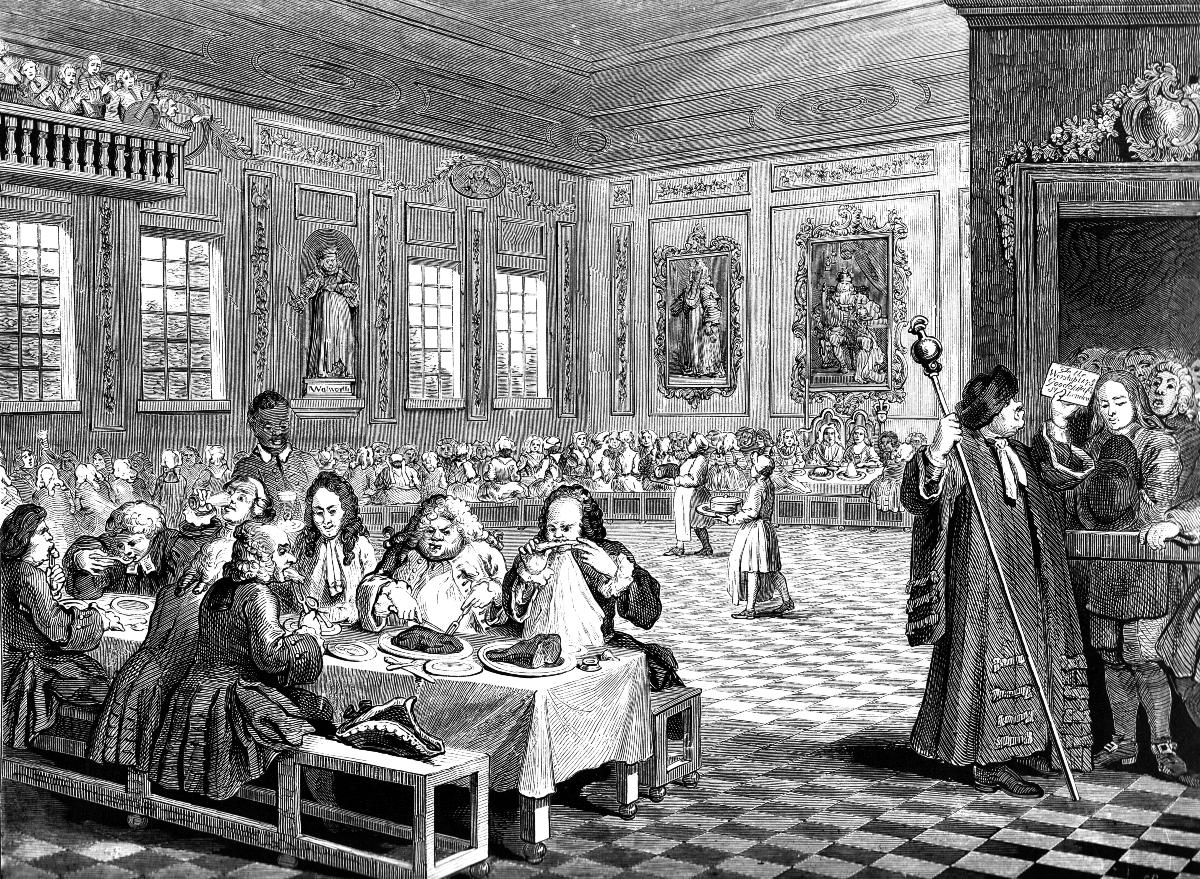
|

|
The amazing web site of Shakespeare's Sonnets. Industry and Idleness. Plate 8. The Industrious Apprentice grown rich and Sheriff of London, by Hogarth.
HAKESPEARE'S
ONNETS
This is part of the web site of Shakespeare's sonnets
PICTURE GALLERY.
William Hogarth 1697 - 1764.
Industry
and Idleness. Plate 8. The Industrious Apprentice
grown rich and Sheriff of London.
1747.
| Hogarth
first achieved fame as an artist through his series of moralistic
engravings, commencing with A
Harlot's Progress
in 1731. This was followed by A
Rake's Progress
in 1735, Marriage
ŕ-la-mode
in 1743-5, and Industry
and Idleness in
1747
. Originally the sets of pictures were oil
paintings which
Hogarth subsequently published as engravings. However the
Industry and Idleness series was conceived entirely as a set
of engravings which were not copied from paintings. They were
put on sale for one shilling each, which is equivalent today, (2008),
to about ten pounds sterling (GBP). Evidently Hogarth was
trying
to appeal to a wider audience than the upper class wealthy who were his
usual patrons. The Industry and Idleness series is rather crudely moralistic, depicting how industry and virtue are rewarded with worldly success, while idleness, corruption and vice is ultimately punished by the gallows. Despite this rather tedious tale, which is not true to life and simplistically misrepresents the apprenticeship system of the time, the engravings are a superb record of both the lower and upper end of London life of the time. The banqueting scene of Plate 8 and the two final crowd scenes of the Tyburn spectacle and the Lord Mayor's Parade are incomparable and show the satirical Hogarth at his very best. |
||
| To a certain extent the plate shows the rewards of industry and honesty, but it is more than anything concerned to satirise the vanity and profligacy of the wealthy merchant classes. The setting is thought to be Fishmonger's Hall, and this would be a banquet of the Fishmonger's Livery Company to which Francis (or Frank) Goodchild and his wife have been invited. They sit in chairs of state beneath the portrait of a monarch. Much gluttony is in evidence, and musicians in a gallery above entertain the guests. At the entrance it appears that a humble petitioner has handed in a letter addressed to 'To the worſhipl Fraſ Goodchild Eſq Sher... Lond'. The letter is pompously scrutinised by an official who holds a staff of office. Such banquets as these were not uncommon and seem to have provoked Hogarth's particular ire. | ||


Shakespeare's Sonnets:
| Start here with the first sonnet |
|
Sonnets 1 - 50 | Some links to other sites | ||
|
|
Sonnets 51 - 100 | ||||
|
|
|
Sonnets 101 - 154 | For
a global search use all the sonnets as
plain text 1-154 or use the first line index. |
If
you have enjoyed this web site, please
visit its companion - Pushkin's Poems |
|
| Map of the site | |||||
| Views of London as it was in 1616. |
London Bridge As it was in Shakespeare's day, circa 1600. |
To
search for a line or phrase in the sonnets
go to the sonnets as plain text and use the browser text search engine. |
| Views of London as it was in 1616. |
London Bridge As it was in Shakespeare's day, circa 1600. |
To search for a line or phrase in the sonnets
go to the Sonnets as plain text and use the browser text search engine. |
| Sonnets 1 - 50 | Back to home page | |
| Sonnets 51 - 100 | If
you have enjoyed this web site, please
visit its companion - Pushkin's Poems |
|
| Sonnets 101 - 154 | If you wish to comment on this site please refer to details on the home page. | |
| Copyright Šof this site belongs to Oxquarry Books Ltd |

Copyright Šof this site belongs to Oxquarry Books Ltd